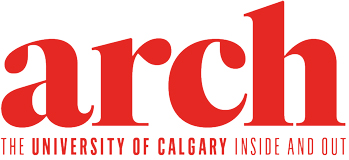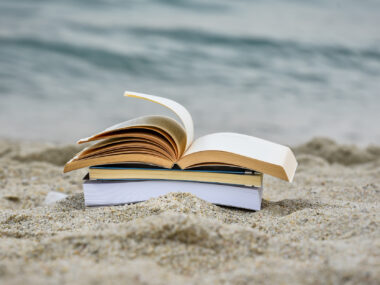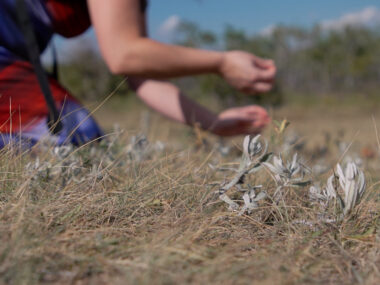Written by Marcello Di Cintio, BSc’97, BA’97
I was born in Calgary in the 1970s and spent my grade-school years in the Catholic system. I only ever learned about Indigenous culture as ancient history. I learned about wigwams and buffalo jumps and tried on feathered headdresses in replica teepees on museum field trips.
For Alberta students of my generation, the First Nations were akin to the Aztecs or the ancient Romans — their civilizations captivating, but bygone. I didn’t know if any of my actual classmates were Indigenous, much less anything about the abuses being perpetrated at the time at St. Mary’s residential school about three hours south in Cardston. For me, Indigenous people did not exist in the present tense.
After graduating from high school, I earned an English degree from the University of Calgary without reading a single book by a Canadian Indigenous author — at least, none that I can recall. To my great shame, I was well into adulthood before I learned about treaties or the residential school system. I feel I’ve spent the last decade catching up, learning the sort of things I should already have known.
I’ve also spent the last decade being a dad. My 11-year-old son already knows more about the residential school system than I do. Earlier this year, he explained to me the significance of the colour orange for Orange Shirt Day and, when I pointed to the red dress hanging in our neighbour’s window, he already knew the dress represented murdered and missing Indigenous women and girls. My son’s knowledge somewhat tempers my own ignorance. At least his generation will be more informed than mine.
But, after a year in which the Alberta government put forward a new draft education curriculum that, according to most observers, undermines Indigenous perspectives, I feel less reason to be optimistic about my son’s education. How much he learns about Indigenous issues moving forward — and how much he doesn’t learn — will depend, in large part, on his teachers. And the teachers who teach his teachers.
In 2013, Calgary entrepreneur David Werklund, Hon. LLD’12, endowed UCalgary’s Faculty of Education with $25 million, the largest donation ever received by an education faculty in Canada. The faculty, which now bears Werklund’s name, promptly set aside funding for Indigenous education and hired five Indigenous scholars to design and implement a mandatory Indigenous education class for pre-service teachers as part of their two-year after-degree program.
Among the scholars tasked with designing the Indigenous Ed class was Dr. Yvonne Poitras Pratt, BA’02, MA’05, PhD’11. Her own undergraduate experience at UCalgary had been similar to mine; Indigenous topics were taught with the same colonial bias. “Instructors were either teaching from outdated resources — with typically racist undertones — or they largely ignored the Indigenous side of the story,” Poitras Pratt says. When she sat down to redesign the university’s Indigenous Ed class, she and her colleagues sought to fill the gaps in teachers’ learning. “We very deliberately sat down and thought to ourselves, ‘Okay, so what are people missing?’”
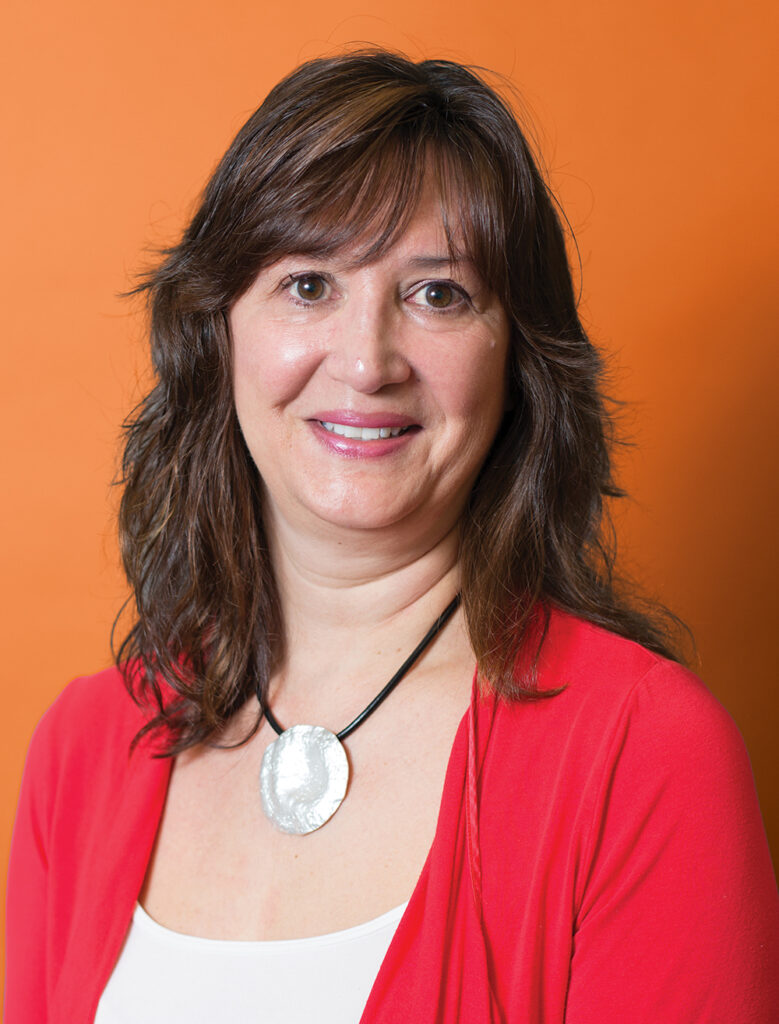
Not everyone supported the new mandatory classes. On her first day teaching the course, and immediately after she finished giving her introduction, one of Poitras Pratt’s white male students put his hand up and demanded to know why he had to take the course. “He was sprawled out in his seat, legs spread,” she says. “I’ve got two big brothers. I know male power when I see it.” Other students boycotted some sections of the program entirely, submitting assignments and writing the exams, but not attending the classes at all.
The animosity towards the program did not last long, though. Poitras Pratt still endures challenges and “troubled assumptions” from some students — as well as the occasional racist blurt — but many students now rank the classes among their favourites. “We’ve really worked hard to make sure that the course is compelling and meaningful,” she says. “It has to meet the university rigour, of course. We do that alongside honouring our own knowledge traditions. So, it’s not like teaching math.”
In 2016, the Werklund School of Education launched a graduate topic in the Master of Education program called Indigenous Education: A Call to Action. Poitras Pratt helped design the program in response to the recommendations of the Truth and Reconciliation Commission of Canada (TRC). Students examine concepts related to decolonization and social justice, engage with Indigenous scholarship, and connect with Indigenous partners. According to the description, the four-course program encourages students to “explore, and enact, their own responses to a national call for reconciliation with Canada’s First Peoples.”
“I always celebrate the students that actually sign up for this program,” Poitras Pratt says. “I say to them, ‘It takes a tremendous amount of courage and self-awareness to understand that you were implicated in this.’ And, so, they step forward into the learning with the right ethos in mind.” Poitras Pratt’s students show a willingness to move their education beyond mere awareness. “They’re moving into action, and that’s where you make the shift,” she says. “That’s where you make the change.”
As part of this action, students must complete a capstone project that brings Reconciliation out of the lecture halls and into real classrooms “Not only do we train our students to be ethically positioned and give them a fulsome understanding of the Canadian past that nobody wants to talk about, but they choose from a variety of community partners from across Canada to enact a service-learning project that responds to the TRC’s Calls to Action,” says Poitras Pratt. While 80 per cent of those students are educators, many are social workers, and health-care and other professionals who want to take this learning into their workplace.
Nicole Farwell completed the Indigenous Education: A Call to Action course in 2020. For her service-learning project, Farwell, BA’04, BEd’08, GCert’20, GDip’21, MSc’21, decided to see how Reconciliation could work in early childhood education. She worked with a daycare in St. Albert, a community with a large Métis population, and helped staff add more traditional and contemporary Métis clothing to the daycare’s “dress-up corner.” Farwell knew simply tossing a Red River Coat and a pair of beaded moccasins into the classroom “Tickle Trunk” wouldn’t teach much. Not without context, anyway. “You have the education piece around it,” Farwell says. “So, we have a local Métis educator who will come in and talk about jigging, and who uses a stash of all these things which end up as part of dress-up alongside the doctor and firefighter costumes.”
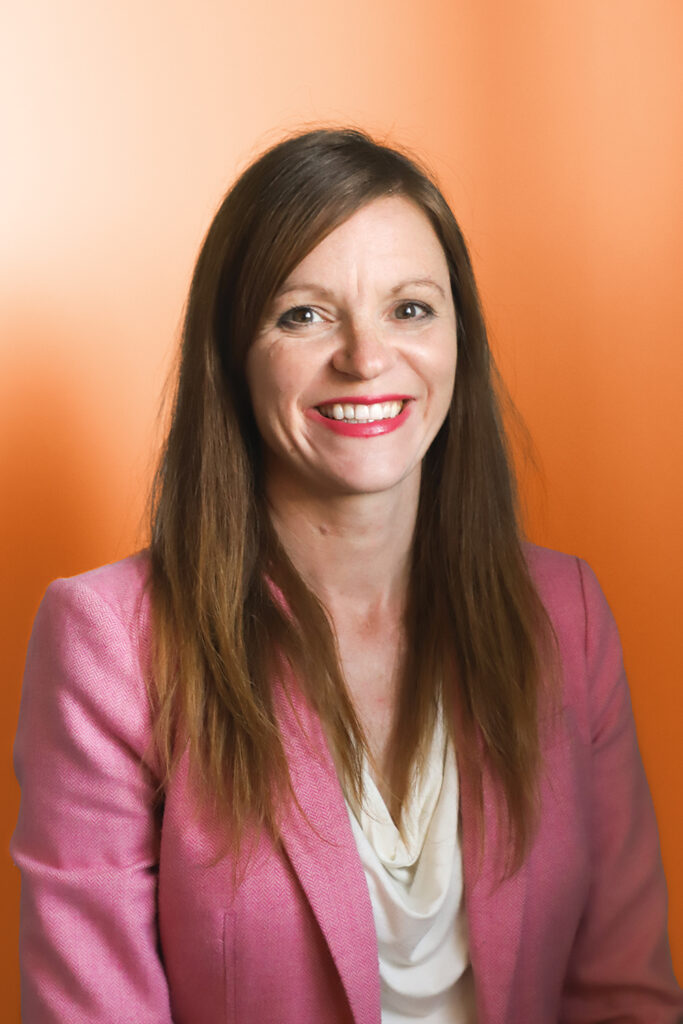
Farwell now serves as the curriculum co-ordinator for the Sturgeon Public School Division north of Edmonton. I asked her how the lessons learned from the MEd Call to Action program might be manifested in the sort of public-school classrooms my son might attend. Farwell believes curriculum needs to move beyond the tired narratives of pre- and post-Contact where the whole Indigenous experience is framed around the arrival of Europeans. “Students have to start understanding First Nations, Métis, Inuit cultures as nations, not as people who were colonized and are now part of the larger Western European story,” Farwell says.
Teachers require confidence to approach issues of reconciliation in their classrooms. Farwell speaks with many teachers who fear “doing it wrong” or “saying the wrong thing.” A survey of 90 Calgary-area teachers in 2018 revealed that 84 per cent of teachers believed that Indigenous education should receive more attention in schools. But the survey also showed that half of the teachers interviewed feared culturally appropriating or making errors.
The solution, according to Poitras Pratt, is to allow Indigenous people to lead the way. Alberta’s students “should be learning about Indigenous peoples from their perspectives,” she says. “Not from some overpaid consultant who knows nothing of our lived experience nor the impact of the colonial history. Not from someone who has this colouring-book idea of us sitting in teepees in the past.” Poitras Pratt believes teachers need to step aside, adopt a “stance of humility,” and “make space for Indigenous peoples who actually could tell us the real story.”
This means having Indigenous people in the room. Farwell recommends schools and school boards hire on-staff Indigenous Elders or Knowledge Keepers who would visit classrooms regularly; that way, Indigenous perspectives become part of students’ every-day experience. This is already policy in some districts. The Sturgeon Public School Division, for example, employs a First Nations woman and a Métis man as part of the district’s curriculum-support team.
“They’ve been clear they don’t want to just teach First Nations culture,” Farwell says. “They want to look at the whole curriculum through that lens.” A Grade 4 science unit on plants, for example, could include Indigenous knowledge about local flora. A language arts creative writing unit could include a section about Indigenous oral storytelling traditions. Such an approach lifts Indigenous perspectives out of the merely historical context and presents them as another way of knowing the world. Having such expert consultation as part of professional development helps teachers become more confident in presenting Indigenous perspectives to their students.
I first reached out to Poitras Pratt in the summer of 2021, at a time when unmarked and mass graves were being identified at former residential school sites across Western Canada. The surprise of non-Indigenous Canadians to the news angers her. “We’re working with a group of Canadians finally waking up to what we’ve been telling them for decades upon decades. They just simply haven’t chosen to hear. That’s the privilege of not hearing,” she says. “Are they choosing not to listen? Or do they have to see the bones of children before they wake up? Isn’t that, like, kind of sickening?”
Pushing past this privileged ignorance is a burden for Indigenous educators like Poitras Pratt who have even suffered health impacts from the stress. “What tends to happen is that the heaviness of the work is foisted onto Indigenous peoples,” she says. “‘Tell us your story.’ ‘Show us your pain.’ And it’s a necessary part. Nothing about us without us. But, at the same time, there’s a cost. There’s a toil on those of us who are actually taking up the work.”
It is not enough for settlers like me to simply be aware of historical and contemporary wrongdoing. “I think they have to commit to actually taking on some of the hurt,” says Poitras Pratt. “That’s nothing compared to what we’ve gone through.”
The reports of the residential school burial sites made me wonder about the idea of “Canada the Good” I’d always been taught. I grew up hearing about Canada as a multicultural haven for poor and oppressed people from around the world. These stories are not mere myths. My own family arrived in Canada after escaping postwar poverty in Italy. Over the years, I’ve met refugees from places like Palestine, Syria and Somalia — and a Hungarian survivor of the Holocaust — all who’ve found comfort and success in Canada. Yet our own dark history of colonization and genocide counters this maple-sweet narrative. I asked Poitras Pratt how we can teach our children to be proud of our country. How do we teach them to love Canada? Should we even bother to do this at all?
“Canada is seen as a place of refuge,” she says. “We’re seen as all these beautiful things. I love our country. But I also think we have to do some cleaning up in our own backyard. And, until we get our own backyard cleaned up, I don’t think we should be going around pretending to be peaceable, tolerant and multicultural.” Ignoring these harder truths risks the stability of the entire culture. “Without recognizing the deep-rootedness of Indigenous peoples in this land, by severing those roots, you’ve got this floppy tree of multiculturalism that will not hold the test of time.”
Poitras Pratt believes we do our children a disservice if we leave out integral parts of our national story. “If we keep sticking our head in the sand, and we keep treating the First Peoples as lesser-than, are we truly all that we can be? If we want this nation to continue on its path to what it could be, we need to start doing some truth-telling.”
The truths needn’t all be traumatic. The whole story encompasses beauty, too. “It’s not just focusing on the residential schools and the hardships that First Nations, Métis and Inuit people have gone through,” Farwell says. “A lot of it is celebrating the strength and the richness of the variety of cultures that exist.”
And there is plenty to celebrate. Indigenous music and visual art, for example, provide opportunities for students to engage with new perspectives. So does literature. I’ve learned more about Indigenous perspectives from Dr. Joshua Whitehead, PhD’21, fiction and Alicia Elliott’s stunning essays than I ever did from my grade-school teachers.
Farwell believes grade-school reading lists need to change. “Shakespeare is lovely, but I question why he is one of the most studied writers,” says Farwell, who jokes some of her English-teacher friends might run her out of town for doubting the Bard’s contemporary relevance but, at the very least, space should be made for the work of First Nations, Inuit and Métis authors. That my son might read Cherie Dimaline’s post-apocalyptic thriller The Marrow Thieves in English class while learning about the Indian Act in Social Studies gives me some degree of hope.
The subject matter of such books makes some teachers cringe, Farwell says. Teachers are uncertain about assigning novels about residential schools, for example, because of harrowing content they feel might not be appropriate for young readers. But suitable titles exist, and more are being written all the time. “We know there’s access to literature that is certainly age-appropriate and is beautiful,” Farwell says. Educators just need to make the effort to find them.
Poitras Pratt and Farwell also agree that university education programs need to turn out more Indigenous teachers. Part of Poitras Pratt’s role as director of the Indigenous Education program is the recruitment of Indigenous students, and she has been successful: half of the Call to Action program’s current students are Indigenous.
Farwell cautions, however, against schools relying on their Indigenous teachers to take sole responsibility for Indigenous education. “That’s not fair,” Farwell says. “The Indigenous teacher on staff cannot be the crutch we all lean on. We still have to do the hard work.”
The effort is key. The common theme in my conversations with both Poitras Pratt and Farwell was that non-Indigenous teachers need to put in the effort. “Sometimes, my First Nations or Métis friends are frustrated with the assumption that the information should just land on your lap,” Farwell says. Teachers need to seek out the knowledge to enrich their students’ learning, and find those who can speak about their experience or direct them to resources. “Do the legwork. Go and find out the information. Go seek it out. Go have those tough conversations where you might ask questions that you’re uncomfortable asking.”
In March, 2021, Adriana LaGrange, Alberta’s education minister, released a draft curriculum for elementary school-aged students. The curriculum earned near-universal derision and ridicule from the province’s educators, Poitras Pratt among them. The majority of Alberta’s school boards declined to pilot the curriculum, and 91 per cent of educators surveyed by the Alberta Teachers’ Association were unhappy with the draft. Among the myriad problems identified by critics of the curriculum was the handing of Indigenous subject matter. The Confederacy of Treaty Six First Nations issued a blunt response to the curriculum in a March 2021 press release:
“What was anticipated to be an opportunity to tell future generations of Albertans about the fulsome and diverse history of this province, including the histories of Treaty First Nations that have existed here since time immemorial, has instead devolved into a Eurocentric, American-focused, Christian-dominant narrative that perpetuates rather than addresses systemic racism and falls far short of providing a balanced, nuanced perspective on Treaty 6 First Nations history and culture. ”
Poitras Pratt was the only Indigenous scholar who took part in the curriculum review — a process she referred to as a “debacle.” The Government of Alberta insisted everyone involved in the review sign a confidentiality agreement which made any individual providing initial feedback unable to speak on the matter until the second phase of public engagement commenced. Poitras Pratt lambasted the draft curriculum in the press, telling Real Talk’s Ryan Jespersen that she was “dismayed, if not disgusted” by the lack of depth in the First Nations, Métis and Inuit content, and went as far as calling the draft “racist.” And she described the curriculum to the Globe and Mail as “very much a celebratory story about the colonial side of our history, where the Indigenous people are more of an add-on to this bigger colonial story.”
As the parent of a school-aged child, I was worried, too. I felt some relief that my son had just graduated from Grade 6 and would, therefore, dodge the much-derided curriculum, as it only covers kindergarten to Grade 6. But I knew that a new curriculum for Grades 7 to 12 is being developed by some of the same consultants.
Farwell, also no fan of the draft curriculum, offers some surprising solace.
“Would it be the thing I would roll out personally? No,” she says. But, despite all the harsh criticism, Farwell doesn’t consider the curriculum to be an irredeemable disaster. She remains confident the document leaves space for teachers, especially “bold” teachers willing to keep learning, to continue the work of reconciliation in their classrooms. “To me, Reconciliation isn’t about outcomes in a curriculum. It’s about an entire way of approaching things. It’s about shifting the dominant worldview in your classroom,” Farwell says. “This work transcends curriculum.”
Farwell doubts any single document can upturn the efforts of her fellow Werklund grads. “The work that’s being done has more energy than any particular piece of paper,” she says. Besides, teachers are more independent-thinking than they are often given credit for, especially when they’ve are motivated to make a difference.
“I trust educators. We’re able to see what has to be done — and to see how it can be done in a way that continues to inspire and continues to put forward the things that we see are true.”
